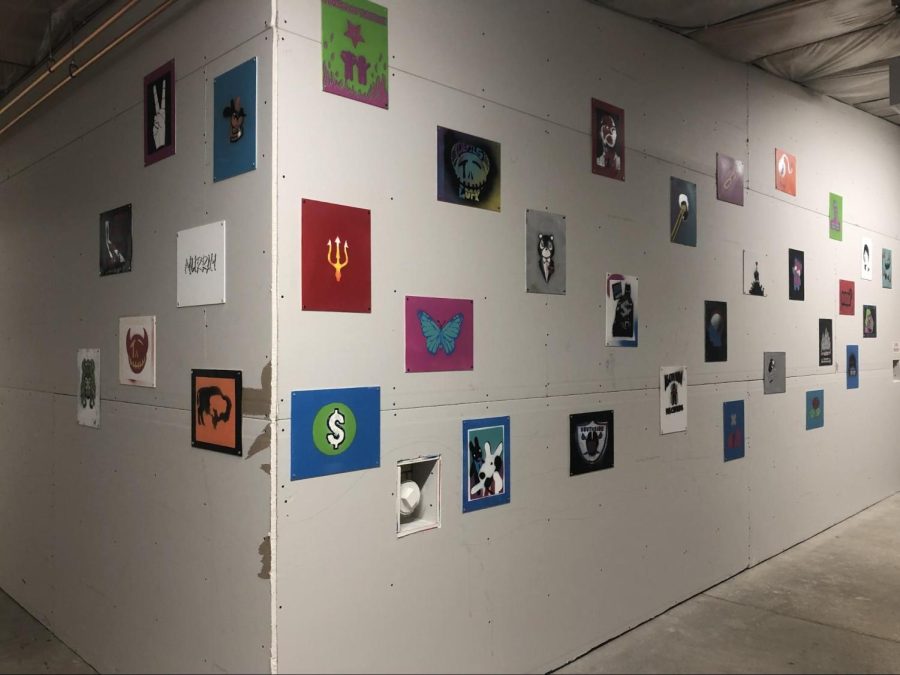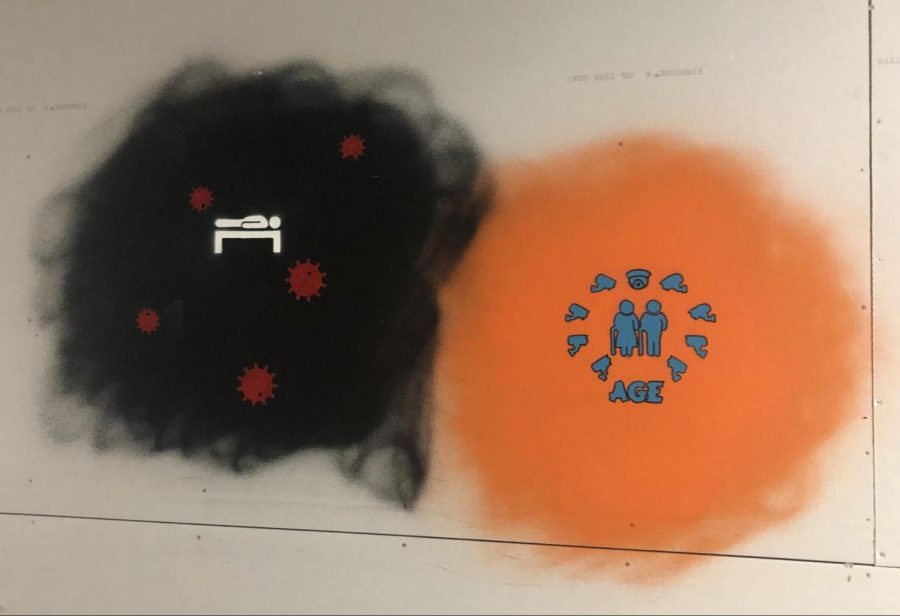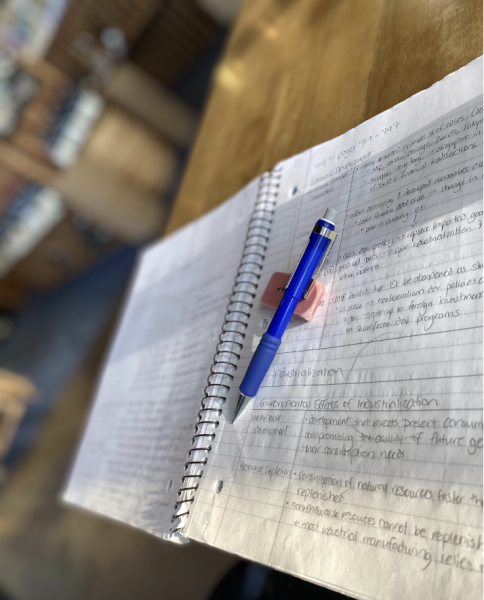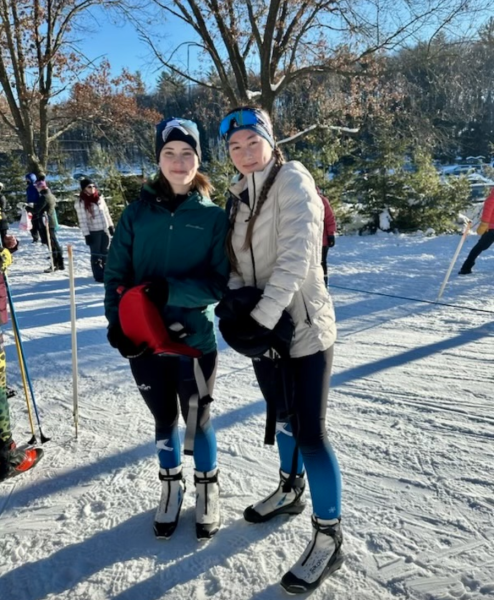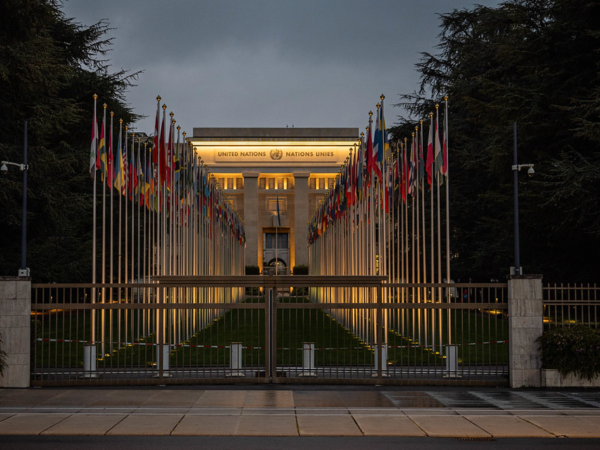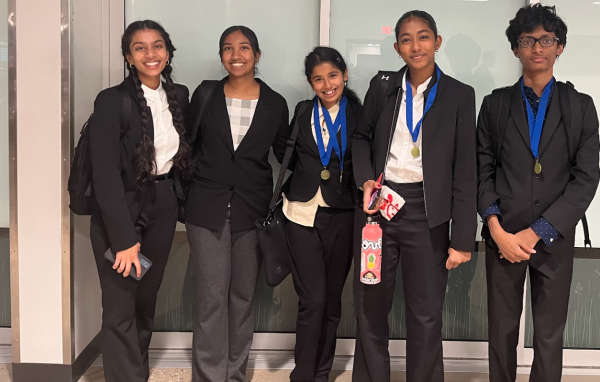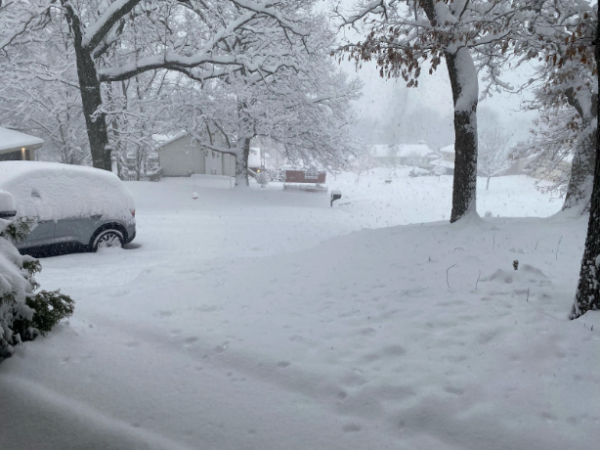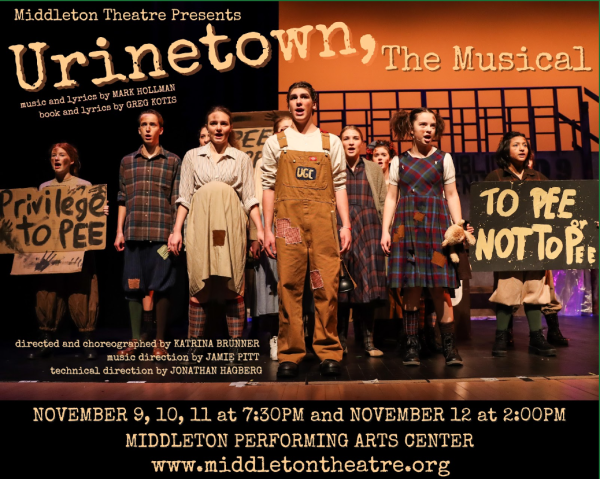Spray Paint, Hip-Hop, and Security Cameras: The Story Behind the Hallway Graffiti
Graffiti art made by students in Mr. Hartman’s Hip-hop Cooperative and Hip-hop Evolution in the temporary hallway.
In the temporary hallway at MHS, six bold spray-painted murals walk through the stages of life, accumulating security cameras in each stage. Farther down the hall, dozens of small, colorful portraits of graffiti clothe the wall. The impressive array ranges from a peace sign to a skeleton on a skateboard.
The person responsible for the original six images is MHS social studies teacher Andy Hartman. His students in Hip-hop Cooperative (a year-round multi-block class) and the semester class Hip-hop Evolution painted the smaller graphics. The classes explore the five pillars of evolution: DJing, MCing, b-boying/b-girling (dance), graffiti, and knowledge of self. As part of the graffiti unit, students delved into the history of graffiti and explored the vandalism vs. art debate.
Six weeks ago, Hartman explains, students were given the assignment to prepare a “spoken-word piece related to social justice or social change.” The next step was to graffiti a work to go “hand-in-hand” with the spoken word, although many students branched out from the prompt. The students used stencil, which Hartman describes as “an easy in-road [to graffiti] because it allows students to control the spray paint more easily.” Students made a minimum of two different cut-outs of an image. They started with the background, then spray painted a cutout on top and waited for it to dry. Then they used a different color to add another cutout.
“The minimum requirement for this project was a 2-layer stencil,” Hartman says. However, many students went above and beyond creating complex works with more than five layers and less than one-millimeter cuts in the cutouts.
Soon the pictures will be accompanied by descriptions students wrote. Later, the students will be allowed to spray paint directly on the hallway walls, like Hartman did. However, Hartman says this is not likely to happen until “the weather is nice where students can circumvent the hallway.”
Hartman’s paintings were primarily to test the spray paint in the hall. “Administration has been very supportive of letting our Hip-hop students do things that typically most schools [wouldn’t]. So there’s a process we wanted to ensure that kids were safe” he said. One concern is the fumes from the paint, which the class will address by using aerosol rather than oil-based paints.
Hartman wanted to paint something thought-provoking that for the students passing by that challenges their view of normal. As a father of a 4 and 2-year-old, he worries his kids are growing up under the watch of too many cameras.
“You have to post every month of their life for their first year on social media,” he says. “From birth they are on a nanny-cam… We have to document the first time they walk.”
This “constant documentation” continues throughout people’s lives with paying for engagement photos, wedding photos, and family photos.
The constant cameras continue at school. “I don’t know how many times I’ve seen somebody say, ‘I saw you on my TikTok feed today’… I had a student who was live-streaming one of my classes to his 55,000 video game followers. It gets intense,” he said. “You walk around the building and we have millions and millions of dollars of surveillance equipment in the school [to] make sure that we are safe in the school.”
This was not the normal he grew up with. In the 80s, he said, “we went out to play and parents didn’t know where we were for eight hours at a time and we had no way to get ahold of them and that was normal.” Hartman desperately wants this “normal” for his kids.
For himself, he worries the cameras will be there his whole life. Hartman’s last painting depicts a person lying, surrounded by COVID-19 viruses, symbolizing death. This is the only painting without security cameras because, as Hartman explains, it seems to be the only time the documentation ends.
As he’s seen in his students, the rush to capture life can take away from it. He said, “I don’t know where the threshold is where the tool becomes a distraction and where the tool starts operating you.”



